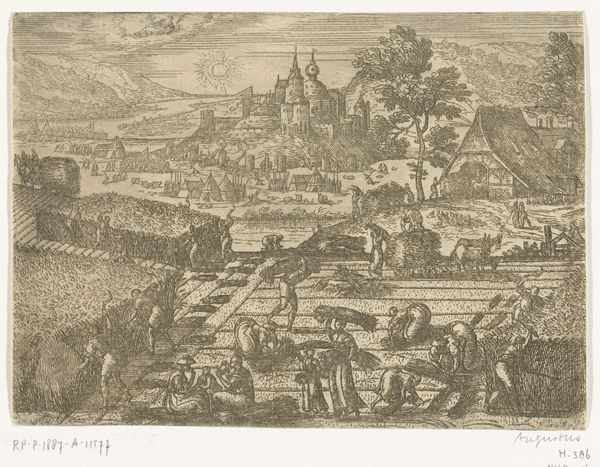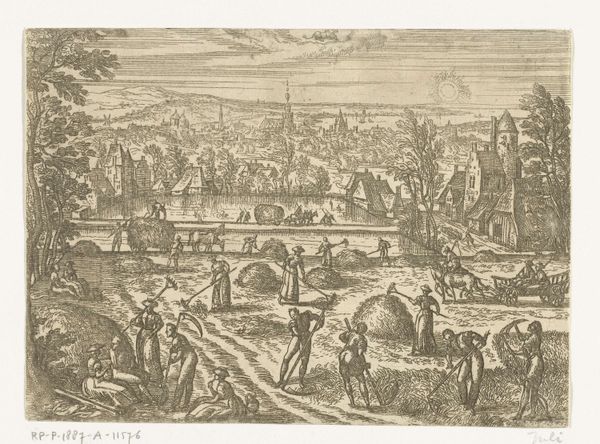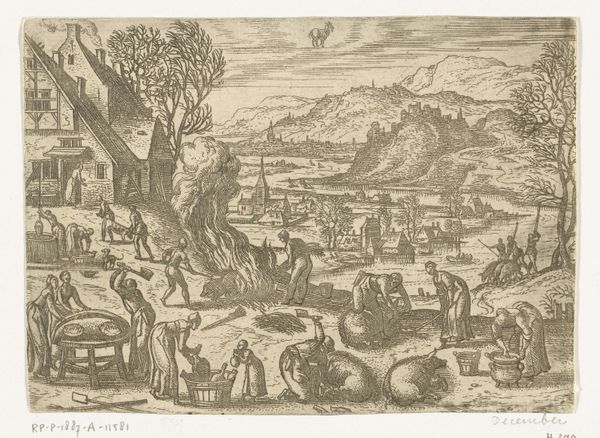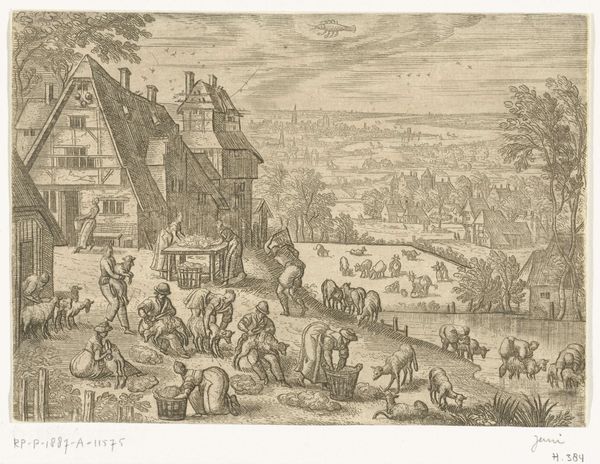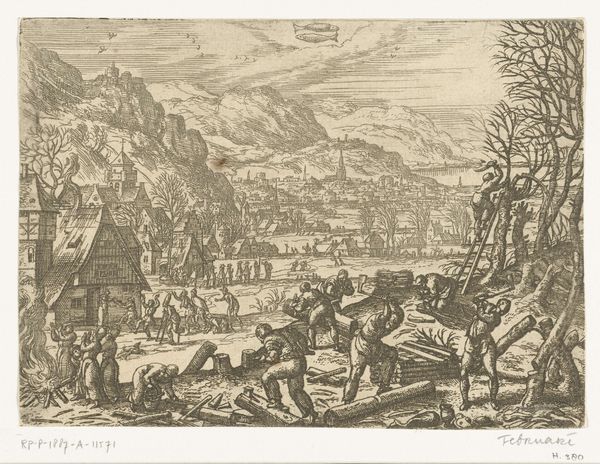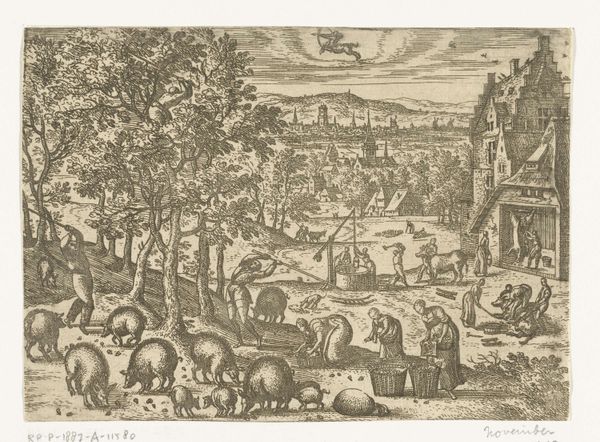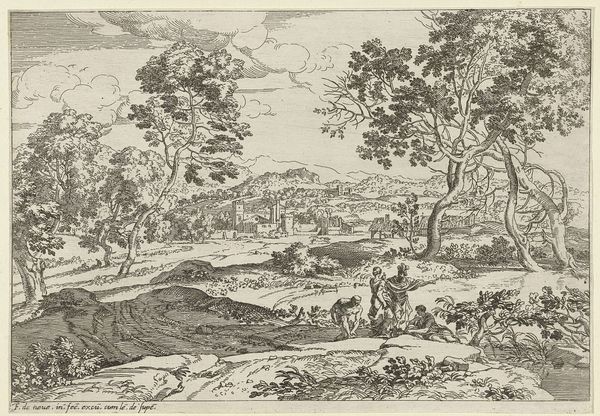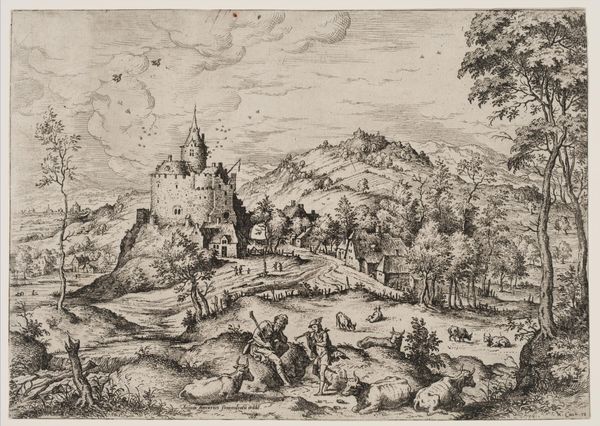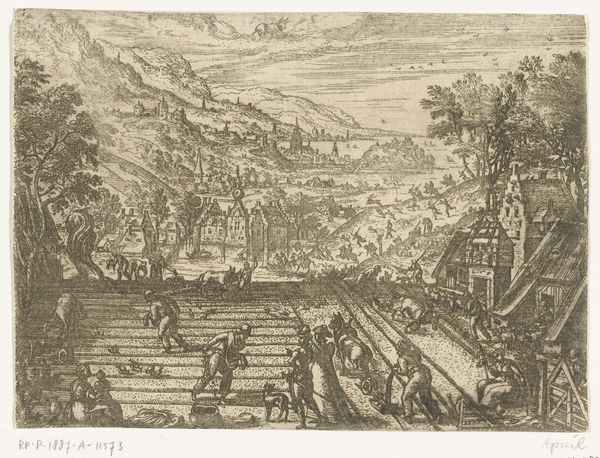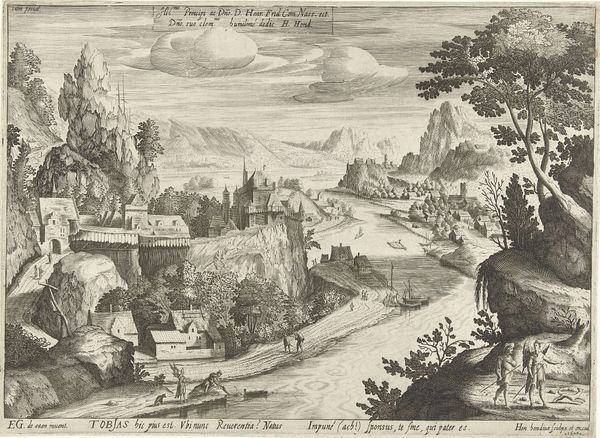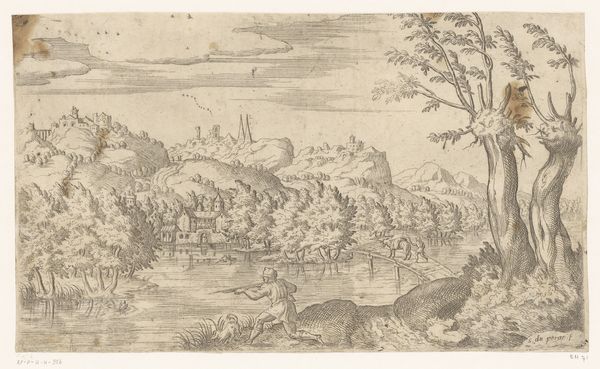
print, engraving
# print
#
old engraving style
#
landscape
#
figuration
#
genre-painting
#
northern-renaissance
#
engraving
Dimensions: width 167 mm, height 120 mm
Copyright: Rijks Museum: Open Domain
Curator: This print is titled "September," made between 1545 and 1608 by Pieter van der Borcht the Elder. It's an engraving. What are your first thoughts? Editor: It evokes a sense of abundant labor, bodies actively harvesting. It’s also remarkably detailed. Curator: Pieter van der Borcht was working during a time when printmaking was essential for disseminating images. These prints circulated widely, shaping perceptions of seasonal labor. Editor: And, interestingly, a rather unbalanced depiction of labour here. The workers appear unclothed. The artist uses the landscape setting and the figures' state of undress to possibly connect humans directly with nature and labor? How does that impact our contemporary reading of the artwork and the figures portrayed? Curator: Certainly. The lack of clothing invites consideration of class and power dynamics in 16th-century agricultural societies, especially because these prints may have been consumed by a wide audience, including those in power. The idyllic imagery often masked harsh realities for the working class. Editor: I see that. How did the distribution affect the view about workers' right back then, and maybe what could be the effect of the prints today? Because today, that scene may even be triggering to some modern viewers due to the labor exploitation being displayed. Curator: Exactly, by focusing on idealized and eroticised views of working class in the "September" series and genre scenes overall, those prints became agents to not only display the elite and their wealthy estate. The print works also can reinforce societal views about labor. In particular they perpetuate views about the value of the working class by either creating an empathetic image that romanticizes the working condition, or creating some sort of hierarchy that positions members of the wealthy elite on top of these communities. Editor: Food for thought. It pushes me to examine how historical artworks and today, their media distribution, reinforce—or challenge—dominant ideologies. Curator: Agreed. And engaging with works like “September” encourages us to have this dialogue around imagery, society, labour, and identity across the boundaries.
Comments
No comments
Be the first to comment and join the conversation on the ultimate creative platform.
